Interview:
Athena McAlpine.
There are guesthouses and great guesthouses, and then, somewhere off in its own statosphere of fabulosity, there is Il Convento di Santa Maria di Costantinopoli.
Il Convento is a 500-year-old monastery in southern Puglia and the home of Athena McAlpine, that she and her late husband, Alistair McAlpine, renovated in the early 2000’s. McAlpine had, prior to this, traversed the worlds of art, construction, publishing and politics, with an appetite for collecting—think Rothkos to policeman’s truncheons—nothing short of epic.
Early on, the couple decided to run the Convento as a bed and breakfast, adorning its metre-thick stone walls with McAlpine’s 14 tonnes of books, vast collection of textiles and stellar Australian art. Over the years guests have returned in their cult-like droves, drawn to the calm of the cloisters, Pierluigi’s cooking and the Convento’s proximity to the turquoise waters of Acquaviva—a following the enchanting Athena maintains in the most delightfully under-the-radar way to this day.
What’s news at Il Convento?
Last year was special as it marked our 20th anniversary. We celebrated by hosting dinners in Copenhagen and Rome, inviting guests who have stayed over the years. We also held a party in the Convento courtyard for local people and businesses in the area who have supported us since we settled here. The butcher, the baker, the candle maker, the grocer, the fishmonger, the vintner, the cheesemaker, the upholsterer, the plumber, the electrician, mayors past and present, the staff past and present, their families, local pizzica musicians. All of these people contribute so much to the running of the Convento. It was wonderful to gather everyone together and be able to celebrate and thank them.
This year we are planning to celebrate the Convento’s 21st birthday by hosting a dinner in Dublin.
A 500-year-old building must have many stories. Are you still learning things about the property?
After 20 years we have become very familiar with this old building and all its kinks and quirks. Last year we cleared out the frantoio which lies beneath the building, where the Franciscan monks would have pressed the olives to make oil. It is a cool, cavernous, beautiful space which feels more like a holy crypt than a lowly olive press.
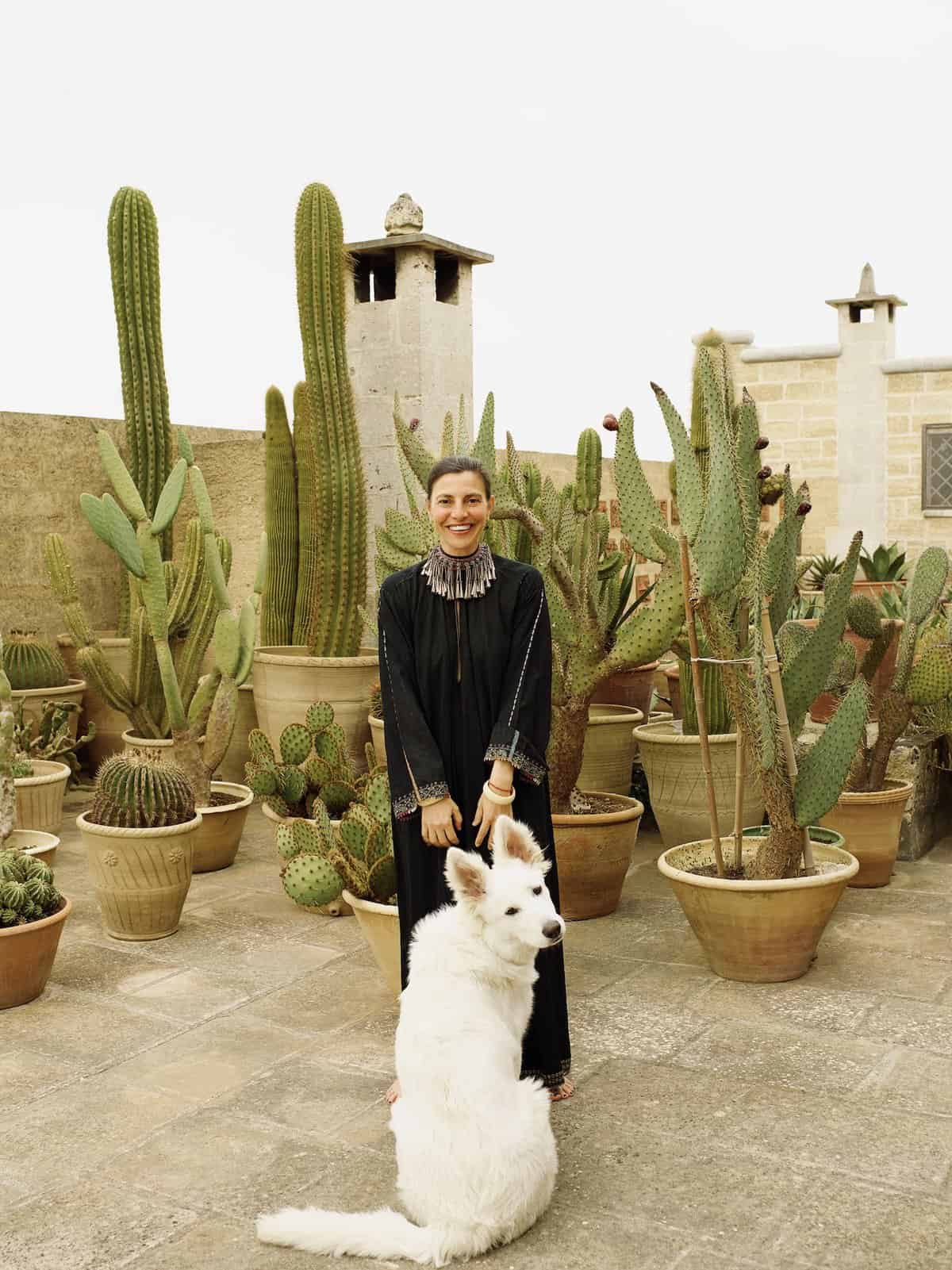

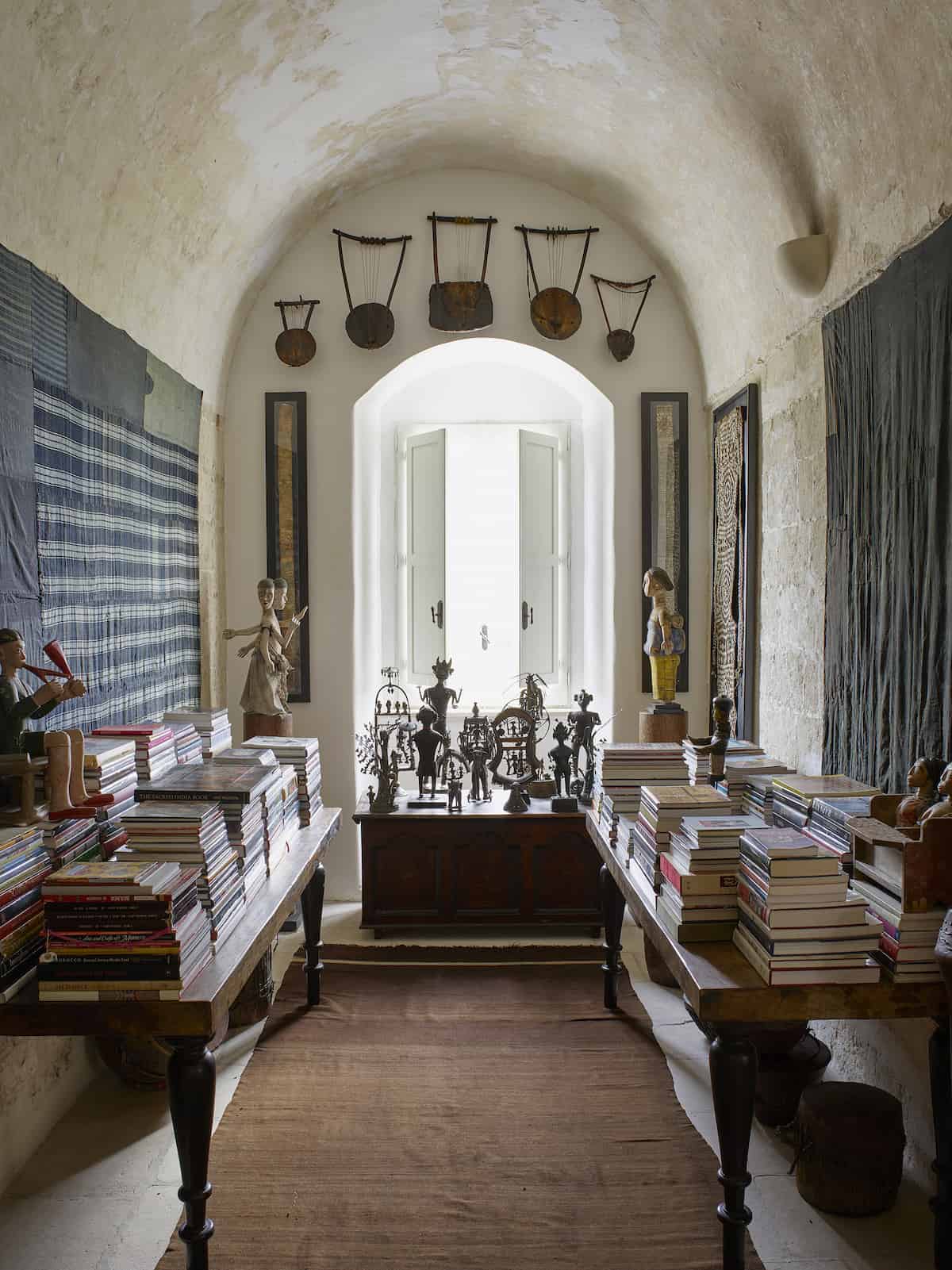
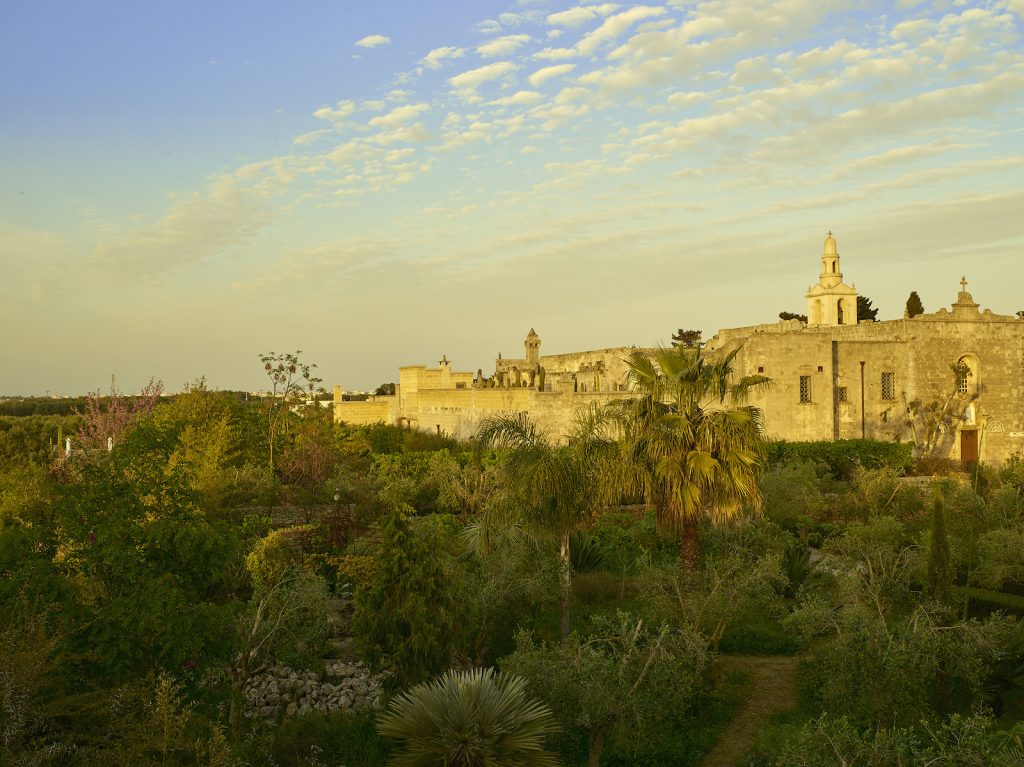
What else can you tell me about its history?
One thing I cannot explain is why it is called Il Convento. This is why everyone assumes it was once inhabited by nuns. It was a monastery rather than a convent, established by Franciscan monks sent south by an Orsini pope to Latinise the Orthodox locals.
The church of Santo Stefano in Soleto is a brilliant record of that period of history, as the frescoes were painted at the time of this conversion from Greek Orthodoxy to Catholicism. Someone pointed out to me that whoever painted the scene of Christ being tempted in the wilderness must have (a) been Greek Orthodox and (b) had a subversive sense of humour, as Christ is being tempted by the devil and the devil is personified as a Franciscan monk with claws instead of feet poking out from under his robes! An Orthodox artist enjoying a cheeky joke!
Much later, during Italian Unification, the Church sold many of its assets and the property fell into private ownership. It was used as a tobacco factory for a time and was then lost in a card game to a scrap merchant, who sold it in a derelict state to Alistair in 1997.
Who was Alistair McAlpine?
Alistair was many things and had many lives!
Some people knew Alistair as a builder; his great-grandfather founded the construction firm, Sir Robert McAlpine in the 19th century and at 16 years old he joined the family business working on building sites.
Later, he came to be known through his life in politics, serving as treasurer and Deputy Chairman of the Conservative Party under Margaret Thatcher.
Many still know of him as a collector and a writer. He collected many things and wrote many books and articles. He was editor-at-large at The World of Interiors, first under Min Hogg and later Rupert Thomas. For nearly a quarter of a century he wrote about his interests, travels and extensive collecting in his column Journal of a Collector. This column is a wonderful record of anecdotes and observations covering an extraordinary range of subjects from American Abstract Expressionism and chickens to antiquities and snowdrops!
What is the Australian connection?
The connection is significant, because of my husband and his love for Australia.
I cannot remember when Alistair first went to Australia, whether it was the late 50s or early 60s but I do remember him telling me he immediately fell under its spell. During the late 60s he built office blocks and developed the city’s first five-star hotel, the Parmelia. Later he built the InterContinental Sydney. He was instrumental in the revitalisation of Broome, the preservation of the Sun Pictures, the oldest outdoor cinema in the world; the creation of a state-of-the-art zoo where they reared rare antelope and hippopotamus; the development of Cable Beach Club and he supported Aboriginal artists like Butcher Joe Nangan and Roy Wiggin. He wanted to give people born in Broome reasons to study, work and stay in Broome.
He was very close to Sidney Nolan. I always remember Alistair telling me how excited Nolan was—I think they were together at the time—to see Giotto’s frescoes in Padua and Assisi, in the flesh rather than just on the pages of a book. When we went to Melbourne in 2012, we visited the National Gallery there and Alistair was looking up and pointing at a wall of Sidney Nolans: “I used to own that, that was mine, that was mine…”
He had a great interest in Australian history and culture, putting together a beautiful collection of early Australian settlement furniture and donating a lot of works to the Art Gallery of New South Wales. He even wrote a memoir about his experiences in Australia called From Bagman to Swagman.
A diverse collection of Australian art lines the walls of the Convento, including the spectacular lineup of the Nolans in the library.
I used to always erroniously call them the Melbourne Ladies but they’re actually the Adelaide Ladies! I feel quite proud of the Aboriginal art here in the Convento. It really resonates with me, and 20 years on, we have a small but significant amount of Australian culture right here on the tip of the heel of Italy. We really do. And I like that—I like that Australians can come and see themselves represented within these walls.
The most wonderful surprise was seeing the Texta drawings in the dining rooms for the first time.
Those drawings by the aboriginal artist Ngarra were the starting point of us collecting together. I wasn’t even 24 hours in Perth before we walked into a gallery, and all these drawings caught both his eye and mine at the same time. There is a photograph of us at the gallery surrounded by all these sheets of paper. We just looked at them and I heard myself saying to Alistair, “I think we have to take them all!” They’re wonderful and I love them very much.
Would you have been a collector had you not met your husband?
Probably not. I think men collect and women roll their eyes and wonder, “where is it all going to go?!” There’s no way I would have collected so actively without him.
However, Alistair always used to tell me that two out of three people collect something and sure enough I have kept every theatre programme of every play I’ve ever gone to see, and I have bought a catalogue of every exhibition I’ve ever gone to. You start poking around and you realise people do collect things; that you’ve got a collection and you don’t even know it. What people get into collecting is extraordinary, and it’s amazing the form these collections can take, once you see multiples of the same object. They take on another dimension. Even basic utilitarian things, when they’re repeated, suddenly become beautiful in their own way.

Maybe it takes a collector and a non-collector to make the perfect match?
Again, I don’t think I was a collector, but I thoroughly enjoyed collecting with him. And it gave me great pleasure to edit, arrange and organise the collection. I remember telling you about our happy astrological pairing—it was kind of the perfect pairing. My mother said when I married Alistair that the lid found the pot. That’s an old Greek expression for when two people are well matched, it is like that clunk of the right lid on the right pot, when they come together.
What came first, the collection or the guesthouse?
I think a lot of people assume this is a lifetime collection but the bulk of it is from the last 12 years of Alistair’s life. When we got together, he already had 3,500 textiles and a run-down monastery. The folk art and tribal art were collected later. I said to him, why don’t we restore the Convento and use it as a backdrop for your collections and turn it into a B&B? I hadn’t even seen it, but he said what a good idea. When he brought me down here on the 2nd of January 2002 and I saw the place for the first time I thought, “Oh my God! How on earth are we going to convince people to come here?!”
And now you have a cult-like following! How many rooms do you have?
We have eight guest rooms. All are different and named after various parts of the world where pieces of the collection come from, such as the Mexican Room or the Indian Room. At the end of the day, the Convento is a home, not a conventional hotel and the rooms are converted monks cells not traditional hotel suites. We do our best to match the guest to the room and hope that they will find the experience of sleeping in it special and comfortable.




I remember having one of the best afternoon naps of my life in the Navajo Room…
Alistair used to always say, we sell sleep. Il Convento is not about looking out from a room with a view. It’s a very inward-looking place. When you walk through the front door, especially in the summer, you can feel the difference in temperature. You step into the cool cloister and switch off. Some people come here, and they do not set foot outside the Convento for the whole duration of their stay unless it is to walk down to Acquaviva for a swim in the sea.
How long do guests stay?
It really varies from one year to the next. I get short stays, a couple of nights, what I call the road trippers, treating themselves to a couple of nights at the Convento on a road trip through Puglia because Puglia is such a long region and there is so much to explore. Others come for longer because they are looking to rest, read and relax. Some people rent the whole place, especially for events and house parties.
What is it that guests love about the place?
At the heart of the Convento you have the care and attention of the staff. They look after the property and the guests beautifully. A tremendous amount of energy goes into service and making the guests feel at home. In fact some of our guests who visit often feel so at home here they come to breakfast in their pyjamas. I love that!
I am very careful though about using the word luxury, as was Alistair. He would say that our definition of luxury is not about having gold taps and modern technology in all the rooms; we may have fans instead of air conditioning and a couple of the rooms do not have ensuite bathrooms, but the luxury lies in the truly simple things like the locally made towels and bed linen. It takes three women to make a bed, the hand embroidered sheets are ironed directly on the mattresses. The laundry is luxurious. The laundry room is a great hub of activity. Great care is taken with guests’ clothing, and it is a useful service for those travelling light. A friend who has been coming here for years brings only a few articles of clothing because she knows they can be freshened up and pressed for the next day. The last but by no means the least reason people like coming here is for Pierluigi’s cooking!
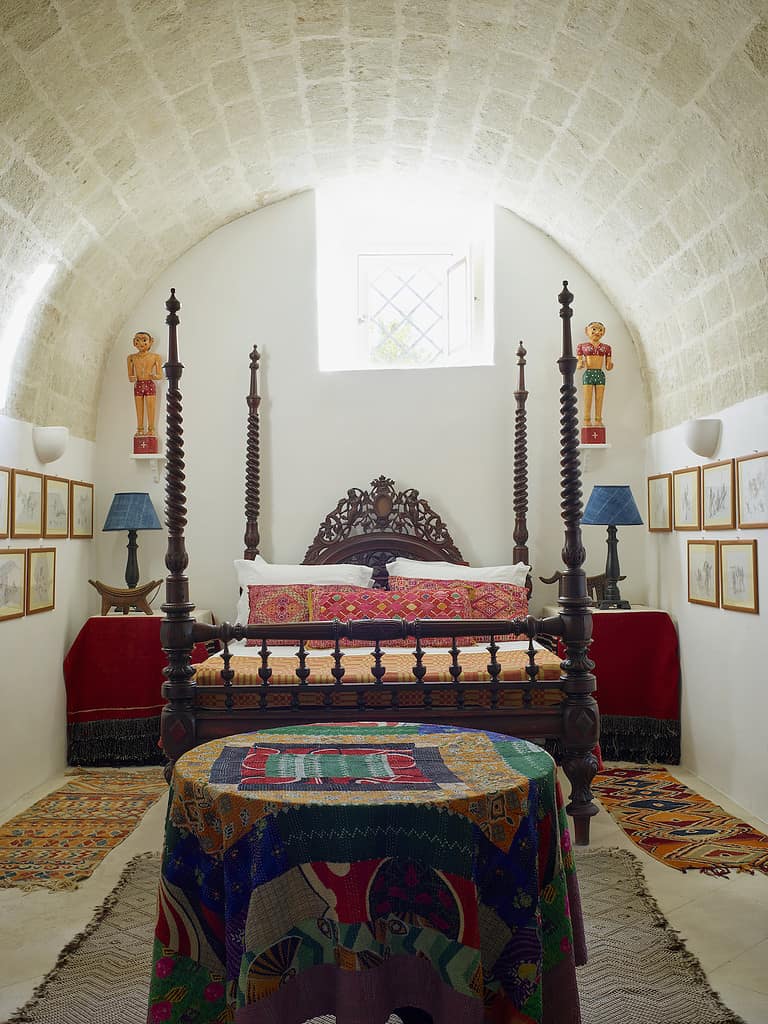
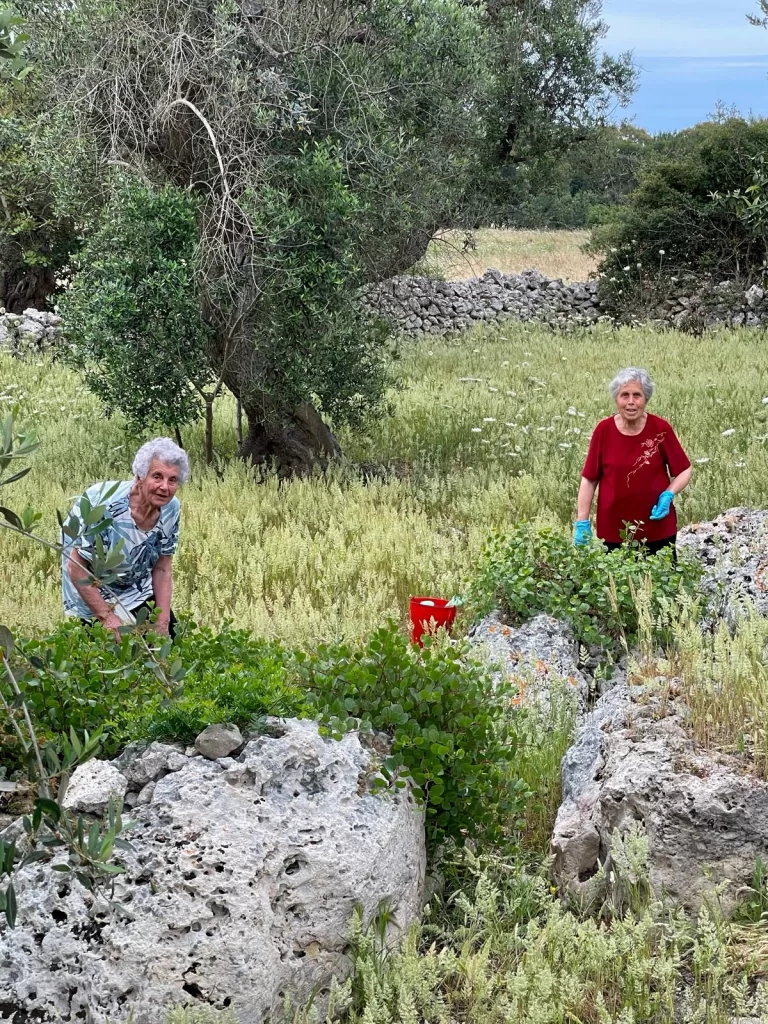
How is the garden?
The garden continues to delight and challenge us. The challenges without a doubt are the change in climate and Xylella, the disease that has afflicted local olive trees, oleanders and to a lesser extent some of our other traditional plants such as rosemary and lavender. Over the last years we have been adapting to these conditions, planting more of what is hardy, resistant and needs less water.
What delights us are the plants that continue to thrive and flower throughout the year; we have planted over 100,000 bulbs to create a colourful spring carpet of anemones, crocus, tulips and dwarf iris; May is the month of the rose, the bearded iris and when the wild flowers are at their most spectacular; later in the summer we enjoy the heavily scented jasmine, the day lilies, the aganpanthi and the bougainvillaea; come the autumn we are gathering the pomegranates and quince from our trees which we are happy to serve at our breakfast table.
Was this always your domain?
No, I was interiors and concentrated on the running of the house. Alistair was exteriors and the garden was his domain. Even though he was brilliant at interiors and didn’t need my input, he was always very generous and encouraging, allowing me to do things my way. But when it came to the garden, I couldn’t get a word in edgeways.
We had very, very few arguments but one of them was about the position of the terracotta elephants at the end of the field. He wanted them very formally positioned at the end of the vista, and I wanted them offset in the far corner, as if they were on a savanna somewhere, wandering lazily through the trees. I’ll never forget coming and finding them put in position without me and crying out “No, no, no, no, no! Why did you put them there? Let’s move them over here!” And his matter of fact reply, “Too late, I’ve cemented them in!” I lost it!
In a way my relationship with Alistair has extended posthumously through the garden. Often I find myself asking him out loud, “Why did you plant that tree here, or put so many of that variety of plant there?”. One of the first things I found myself thinking when he died was; “How am I going to cope with the garden?”
Over the last ten years I have been scaling back and undoing some of things that he’d done but always maintaining his vision. I sometimes wonder if gardens can for some people be their final swan song, in a way.

Do you enjoy being an innkeeper?
I feel very lucky here, because I am interested in a lot of things. And I do think it’s rather wonderful to have a role where I can indulge so many of my interests. It doesn’t really feel like a job but there is always a lot to do. I love being surrounded by books and organising libraries—it’s a very Virgo thing. And arranging collections, that’s wonderful too. I am able to indulge my interest in food by planning menus and trying out new recipes with Pierluigi our cook and of course working in the garden.
As much of my activity is contained within these tall walls, I don’t step out too often. However I am constantly welcoming people in, endlessly fascinating, interesting people come and go so it feels like the world comes to the Convento!
You are Greek. Shelving the fact you were born in Ireland, educated in England and have lived all over the world, what has it been like for you, to live as a Greek in Salento?
Being Greek and having spent all my summers on an island I was already familiar with village life and the customs, attitudes and traditions that come with it; living close to the land and the sea, living simply and with less, observing saints’ days and religious festivals, eating seasonally, taking siestas, a deep respect for older members of the community, the freedom children have to play in piazzas and ride their bicycles at breakneck speeds in the streets, strong ties with family and community and generally a slower pace of life. With all of this also come the frustrations of lack of infrastructure and certain services we take for granted in bigger cities and of course bureaucracy, so you need a lot of understanding and patience!
It’s a strange and wonderful place, deserted one minute and bursting with life the next.
I call it Salento Nascosto, the Hidden Salento. There are all these blank and imposing facades, shutters and rolled-down windows, and everyone is trying to figure out how populated these towns are. But when doors are open and you get to peer inside a courtyard, you discover something very beautiful. I find the people down here are a bit like that too: austere and severe on the outside but once you get to know them, they’re soft and gentle. Not unlike the Greeks!
When you do step out, where are you off to next?
This year I would like to stay at Palazzo Sbutega in Montenegro, which is owned and run by my dear friend Nigel Barnfield.
And where haven’t you been that you’d like to go?
Japan. I love the exquisite delicacy of their arts, crafts and culture and long to immerse myself in it.
Would you like to return to Australia?
Absolutely. To Broome, obviously, as it was so close to Alistair’s heart, and I would like to explore more of the Northern Territory.
My dream is to return to Sydney and Melbourne in the near future and reconnect with the many guests that have visited us over the last 20 years. Alistair loved Australia and enjoyed the company of Australian people immensely. I am very grateful that I was able to visit the continent with him and I like to think of Il Convento as a home away from home for Australians travelling through Italy, not only because of our collection of Aboriginal art and the presence of Sidney Nolan’s Ladies of Adelaide hanging in the library corridor, but because we are always sure to have a jar of Vegemite on the breakfast table.
Photography: Henry Bourne and Athena McAlpine
Book your stay at Il Convento di Santa Maria di Costantinopoli with Essential Italy.